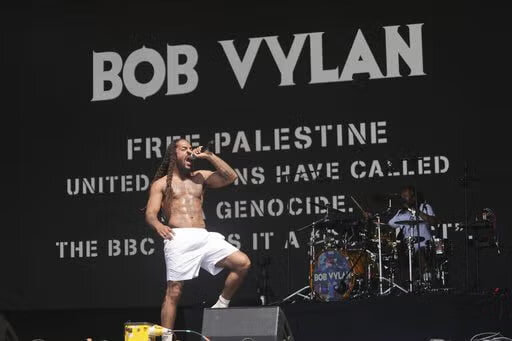A transnational uprising: Humanity stands with Gaza and Iran

TEHRAN – Iran and Gaza have been front and center for global protesters in the past few days, who have been taking to the streets to condemn the Israeli regime’s unchecked aggression plaguing the region since October of 2023.
After decimating significant parts of the besieged Gaza Strip in the past 20 months and creating an unprecedented humanitarian crisis there, Israel moved its gears towards Iran, launching a war against the country on June 13, 2025. While the regime was forced to ask for a pause 12 days after it began fighting, it still left hundreds of Iranian civilians, military leaders, and nuclear scientists dead across Iran.
Over the last days of June, demonstrators across Asia, Africa, Europe, and North America have called for peace, justice, and humanitarian aid, asking that the regime end its escalating violence before more innocent lives are taken.
Cross-border solidarity in Asia and Africa
In Asia, solidarity was evident in several countries. On June 25, Kwon Young-guk, a former South Korean presidential candidate, rallied in front of the U.S. Embassy in Seoul, criticizing the U.S. for escalating tensions.
In Sydney, Australian and Iranian activists protested on June 28 against U.S. and Israeli actions, showcasing cross-cultural unity.
In Morocco, on June 28, thousands marched in cities like Casablanca, Tangier, and Tetouan, organized by the Moroccan Commission for the Support of the Nation’s Causes. They condemned Israel’s actions in Gaza and demanded urgent humanitarian aid, chanting slogans in support of Palestine.
Symbolic acts to mass mobilization in Europe
Europe became a focal point for diverse demonstrations. In Germany, Berlin police arrested peaceful pro-Gaza protesters on June 28, prompting concerns about freedom of expression. In France, Besançon’s mayor, Anne Vignot, raised the Palestinian flag over the city hall on June 28, symbolizing solidarity with Gaza. In Brussels, a man climbed a scaffolding to raise the Palestinian flag, cheered by crowds chanting for justice. Stockholm hosted a march on June 28, while Rotterdam saw an anti-Zionist demonstration on June 27. Copenhagen’s “Music for Palestine” event on June 29 used culture to express solidarity. In Vienna, thousands, including anti-Zionist Jewish groups, rallied on June 28 to support Iran and Palestine, condemning Israeli aggression. The UK’s Glastonbury Festival on June 28 became controversial when punk duo Bob Vylan led chants of “Free Palestine” and “Death to the IDF,” condemned by organizers and the BBC for crossing a line.
North American and Latin American support
North America also saw significant protests. On June 27, hundreds in New York City demonstrated against Israel’s actions in Gaza, joining the global movement. Mexico City hosted a solidarity rally for Palestine on the same day, reflecting Latin American support for the cause.
Public confrontations and religious dissent
Several incidents underscored the intensity of global sentiment. In Hamburg, on June 27, activists confronted Mayor Peter Tschentscher, accusing him of supporting genocide in Gaza after he defended Israel’s actions in a podcast.
Anti-Zionist Jewish groups, notably Neturei Karta, expressed support for Iran on June 29, arguing that Zionism is a political movement that has hijacked Judaism and that establishing a Jewish state before the Messiah’s arrival is forbidden by Jewish law. The Glastonbury incident highlighted the role of cultural platforms, with Bob Vylan’s chants sparking debates about free speech and media responsibility.
A shift in global public consciousness
The surge of global protests in late June 2025 reveals a profound shift in public consciousness regarding the ongoing crisis in Gaza and Israel’s military actions against Iran.
Far from isolated national responses, the demonstrations represent a transnational convergence of humanitarian concern, political awareness, and civil resistance. What distinguishes this wave of dissent is its diversity—geographically, demographically, and ideologically. From Seoul to Sydney, Casablanca to Copenhagen, and Berlin to Mexico City, citizens took to the streets not only to denounce war crimes and civilian casualties but also to challenge what many perceive as a Western double standard in foreign policy and media coverage.
This global reaction also underscores the increasing inability of governments and mainstream institutions to suppress or contain public criticism through censorship, arrests, or selective narratives. The arrest of peaceful protesters in Berlin and the backlash against artists at the UK’s Glastonbury Festival illustrate the growing tension between official positions and public sentiment. At the same time, the active involvement of anti-Zionist Jewish groups complicates simplistic binaries and reframes the conflict as one of political ideology versus universal human rights.
Moreover, the use of cultural platforms—like music events, public art, and grassroots mobilization—demonstrates that traditional politics is no longer the sole arena of protest. The expression of solidarity has become deeply embedded in civil society, often led by marginalized or cross-cultural alliances that transcend borders and religious divides.
In essence, these protests signal not just a rejection of specific military actions but a broader demand for accountability, justice, and a reevaluation of international complicity in prolonged human suffering.
Leave a Comment